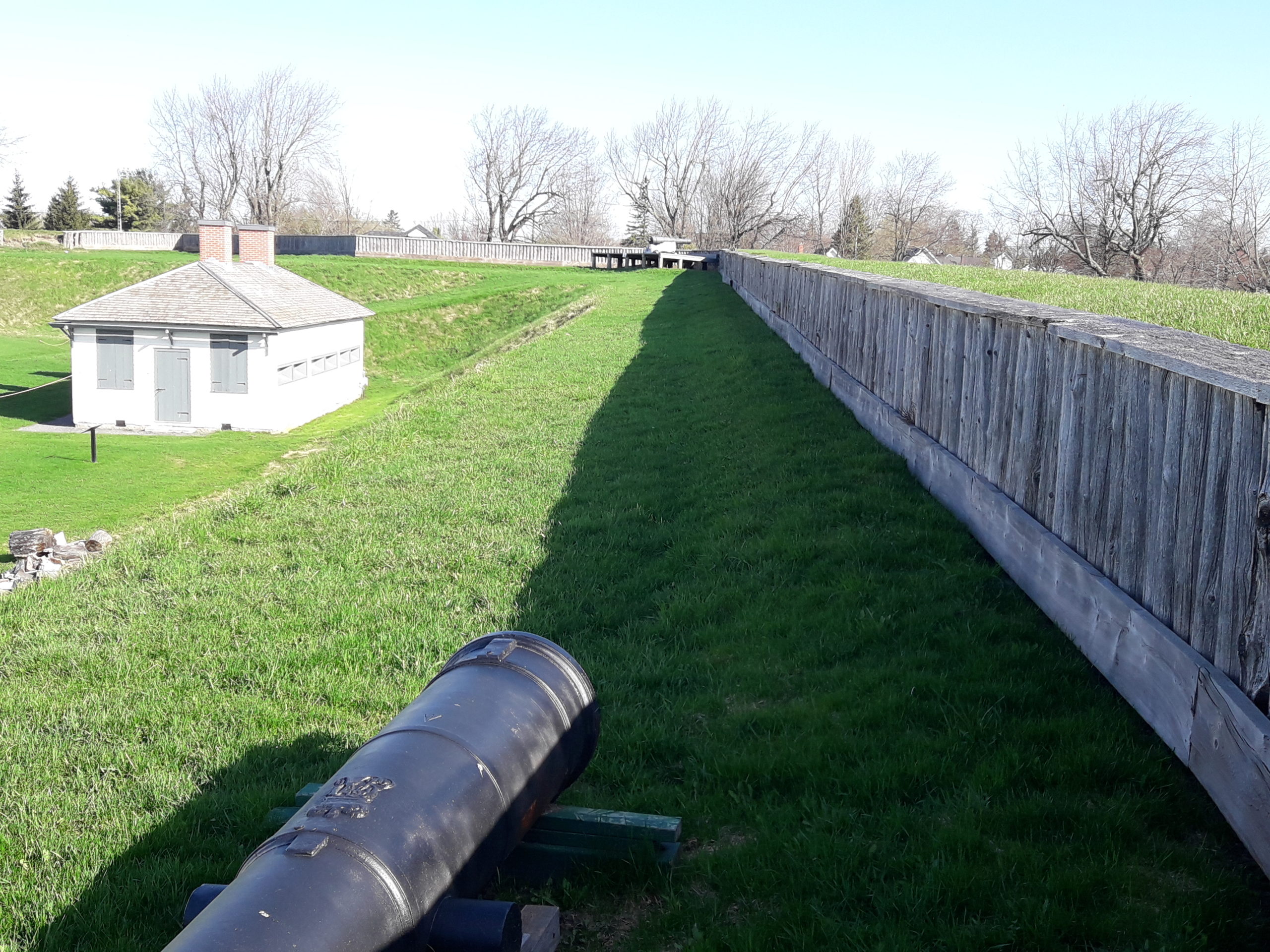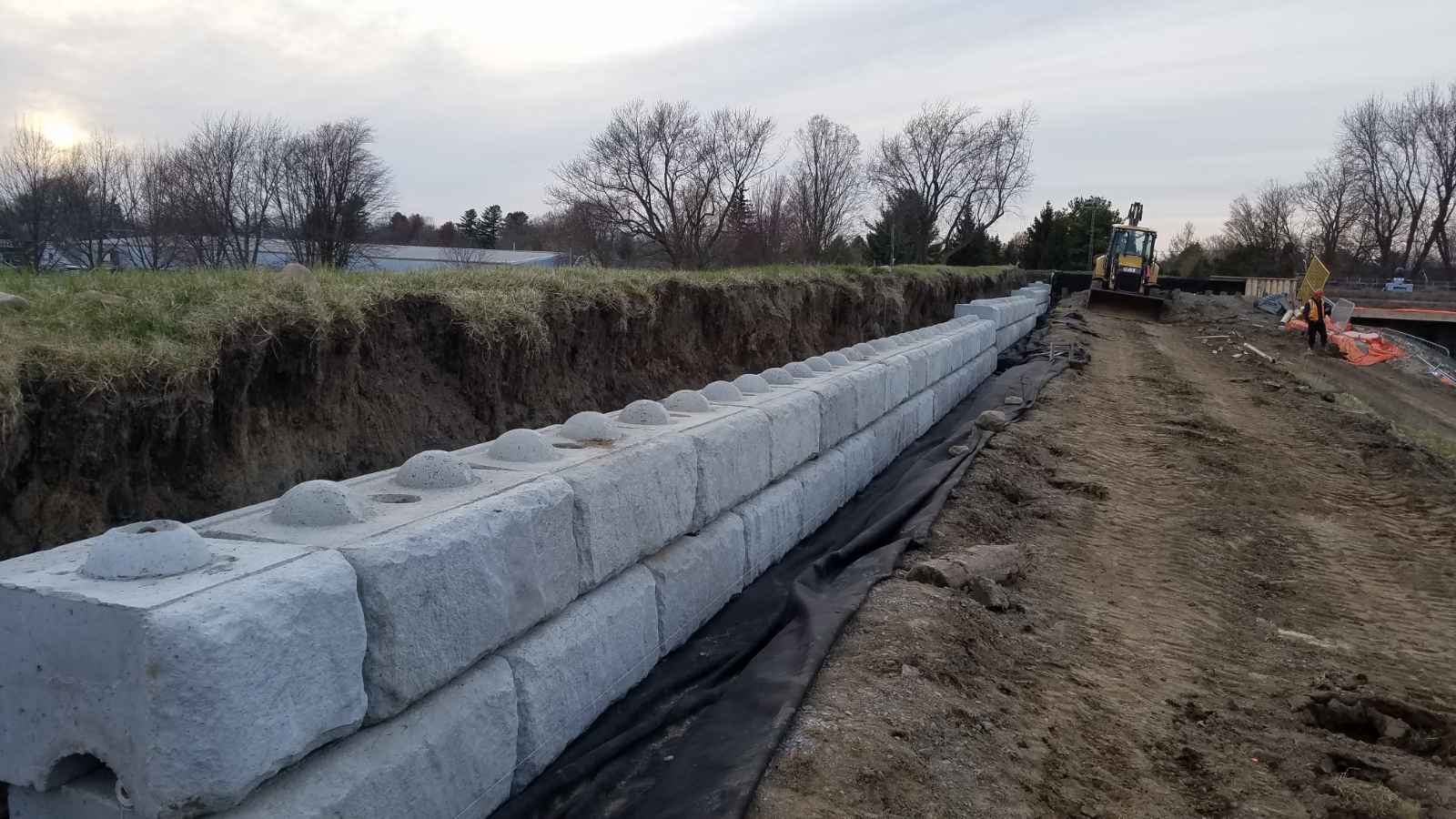Fort Wellington National Historic Site Rehabilitation


Fort Wellington was built by the British in 1813 to defend the line of communications between Montreal and Kingston during the war of 1812. Rehabilitation on this once-in-a-lifetime project included fraising (pointed cedar stakes), spiked wooden palisades, wood-and-earthen revetment wall, the carronade (small cannon) platform, masonry arch and entrance gate.
We removed and rebuilt existing masonry, repointed existing masonry joints, supplied and installed pre-cast concrete units and cast-in-place concrete walls, removed and replaced heritage woodwork, and excavation and grading.
Originally, the palisades were driven into the ground. Our approach preserved both the strength and historical appearance while ensuring longevity. We used historically specified spiked cedar logs 10 to 12 inches in diameter and 10 to 12 feet high. Instead of supporting the anchor logs by burying them, we drove helical piles every six feet and welded steel plates to them. We then welded HSS posts to the plates and placed cored-out logs over the steel posts. As with the historical design, the remining logs between the anchor logs are supported by stringers.
Client
Parks Canada Agency
Expertise
Heritage Restoration
In The News
Click Here
Additional Project Experience
Sault Ste. Marie Courthouse
